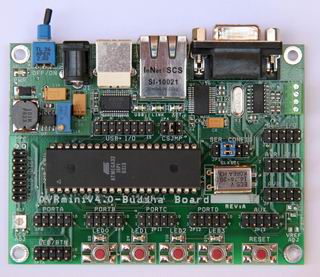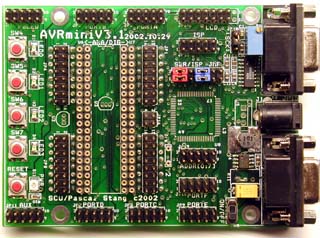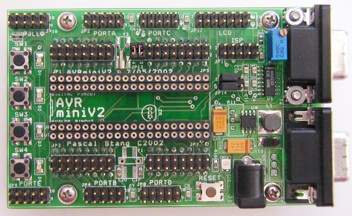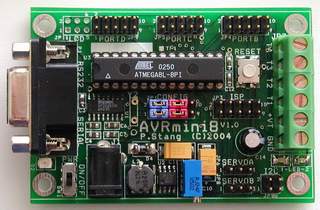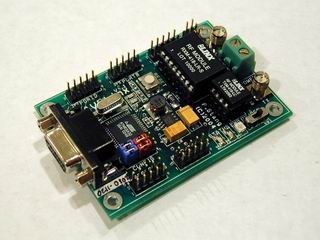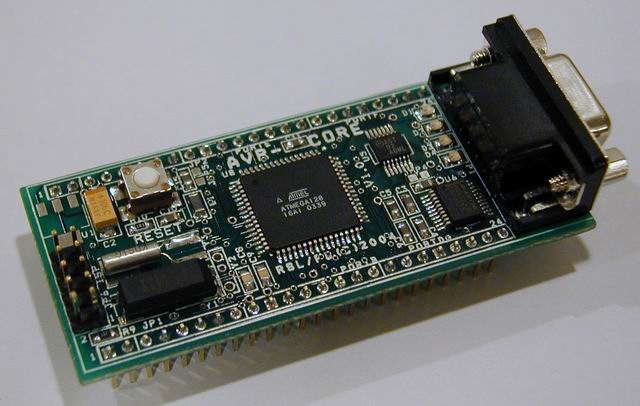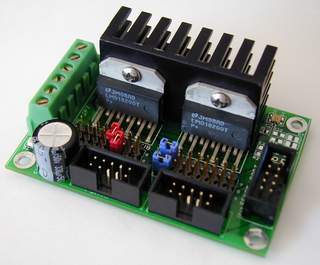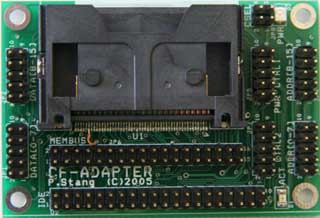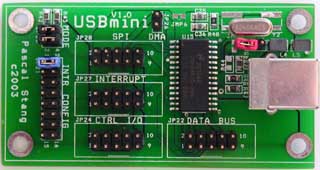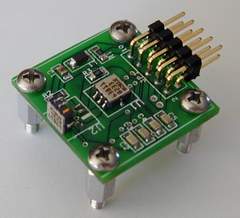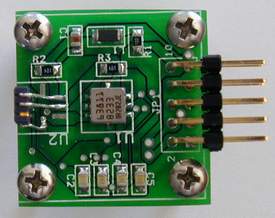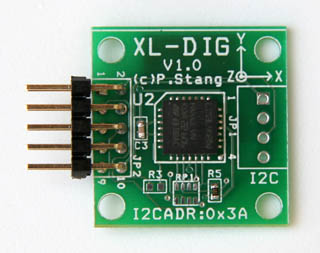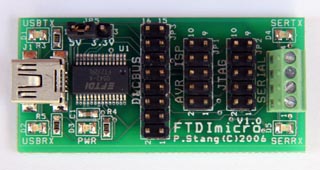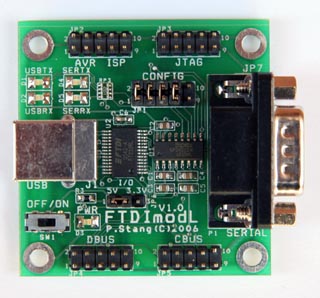| |
The AVRmini8 board is a miniature development board for the 28-pin AVR series
processors such as the ATmega8, and ATmega44,88,168. The AVRmini8 offers additional
connectors and flexibility for I/O. RC servos, analog and digital sensors, I2C
components, and Character LCDs are directly connectable to the AVRmini8 without
additional cabling.
AVRmini8 V1.0 Features:
- ATmega8 processor (28-pin DIP, also aupports ATmega44,88,168)
- Standard DB-9 RS-232 serial port
- All processor I/O ports broken out into 10-pin headers (same as STK500)
- PORTD header expandable into std. char LCD header with bias voltage
- RC-Servo 3-pin headers (connects to processor PWM pins)
- I2C connector 4-pin header (carries SCL, SDA, +5V, GND)
- 10-pin ISP header for external programmer hardware (such as STK500 or AVRISP)
- Screw-terminal block (6-pos) carries:
- Combination of ADC inputs and INT pins (jumper selectable)
- GND and +5V
- Socketed CPU crystal
- Two user LEDs
- Power LED and RESET pushbutton
- High-efficiency 5V regulator accepts 6-20Vin (90% eff. typ.)
- Board size: 4" x 3" x 1" (LxWxH)
|
